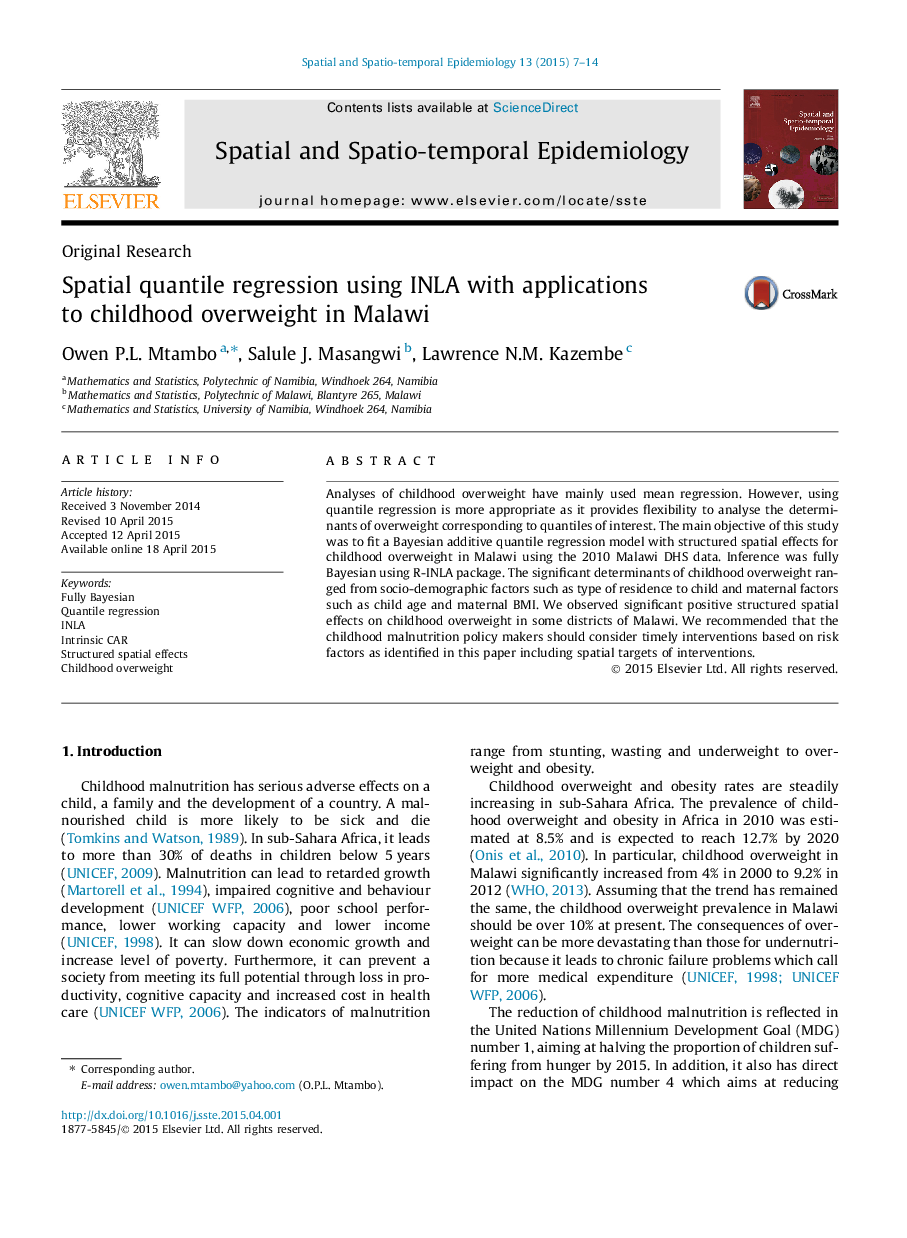| Article ID | Journal | Published Year | Pages | File Type |
|---|---|---|---|---|
| 1064316 | Spatial and Spatio-temporal Epidemiology | 2015 | 8 Pages |
•Best fitting spatial quantile model was identified at 85th quantile level.•Working mothers and richest households have increased childhood overweight.•Rapid increase in childhood overweight in first 24 months after birth.•Rapid increase in childhood overweight for mother’s BMI between 30 and 35 kg/m2.•Significant positive structured spatial effects were observed at 95% nominal level.
Analyses of childhood overweight have mainly used mean regression. However, using quantile regression is more appropriate as it provides flexibility to analyse the determinants of overweight corresponding to quantiles of interest. The main objective of this study was to fit a Bayesian additive quantile regression model with structured spatial effects for childhood overweight in Malawi using the 2010 Malawi DHS data. Inference was fully Bayesian using R-INLA package. The significant determinants of childhood overweight ranged from socio-demographic factors such as type of residence to child and maternal factors such as child age and maternal BMI. We observed significant positive structured spatial effects on childhood overweight in some districts of Malawi. We recommended that the childhood malnutrition policy makers should consider timely interventions based on risk factors as identified in this paper including spatial targets of interventions.
